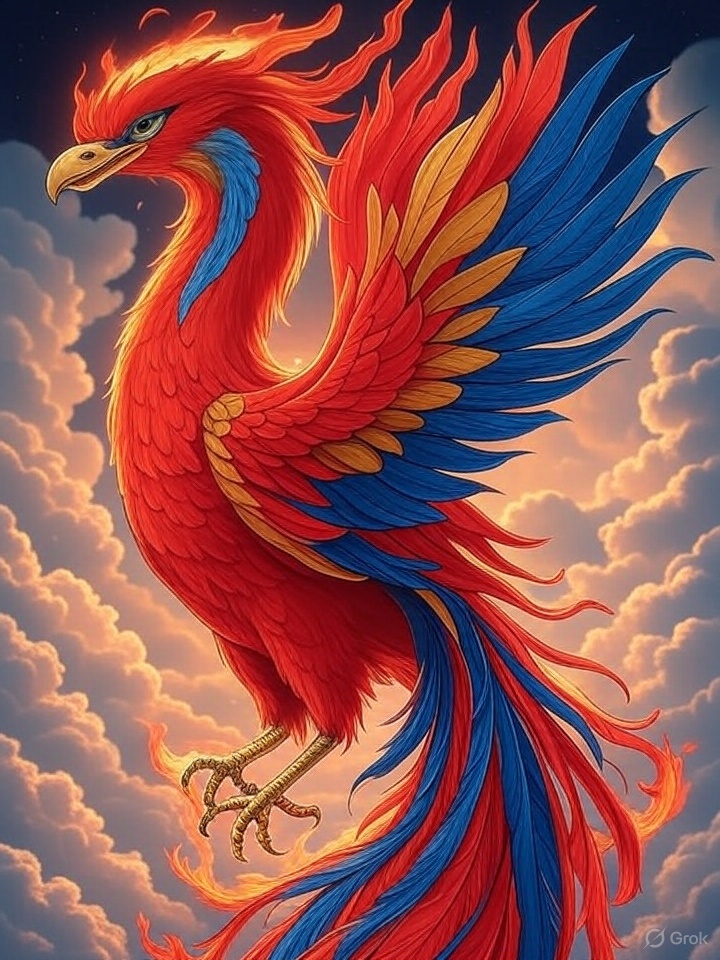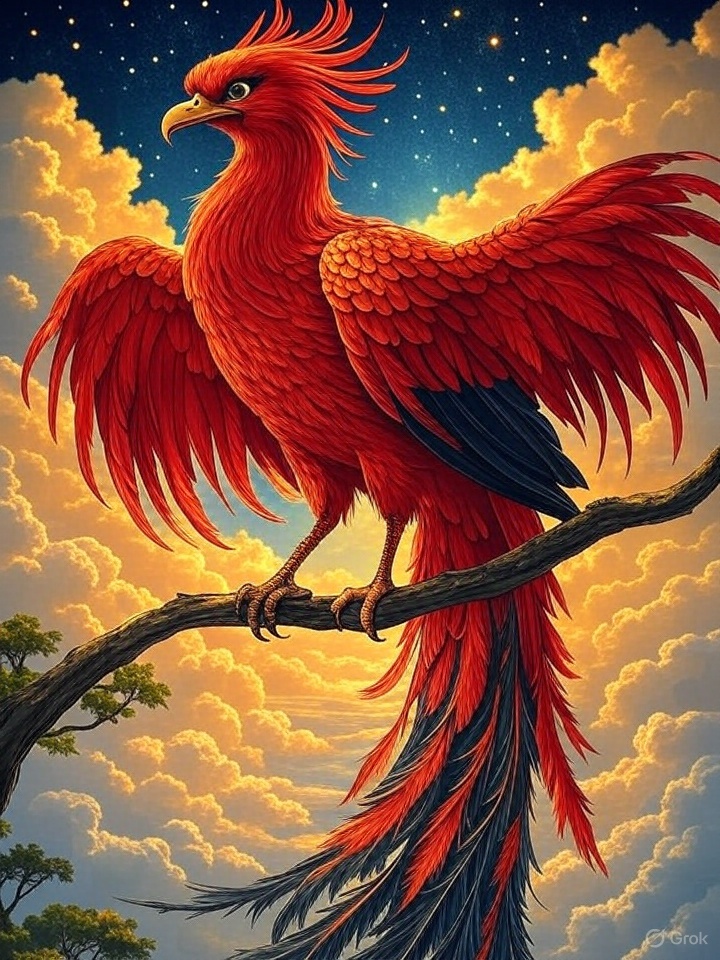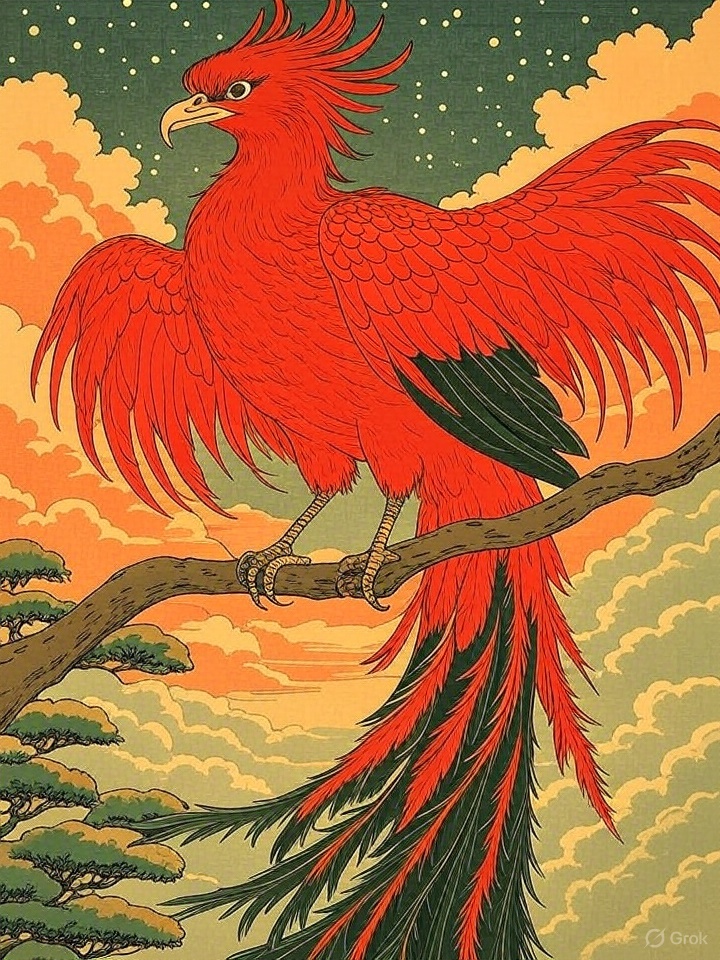Name Meaning
Overview
\n
Hō-ō (鳳凰) is the Japanese name for the phoenix or fenghuang—a mythological bird known throughout East Asia. It symbolizes peace, righteousness, and the harmony of yin and yang.
- Hō (鳳) = male phoenix
- Ō (凰) = female phoenix
Origin
- Originates from ancient Chinese mythology as the fenghuang.
- Introduced to Japan where it became an imperial symbol, appearing on temples, clothing, and art.
- Often paired with the dragon to represent balance and the imperial couple.
Appearance
- Described as a majestic, colorful bird with elements of many animals: the head of a pheasant, the beak of a parrot, the tail of a peacock.
- Glows with divine light and often surrounded by fire or clouds.
- Typically depicted in flight or perched atop sacred buildings.
Behavior & Myths
- Only appears during times of great peace and virtue.
- Said to descend from heaven to bless emperors or herald a golden age.
- Appears in classical Japanese architecture and festivals as a sacred guardian.
Symbolism
- Symbol of imperial authority and purity.
- Represents balance, harmony, and the union of opposites.
- Seen as a cosmic protector and divine messenger.



